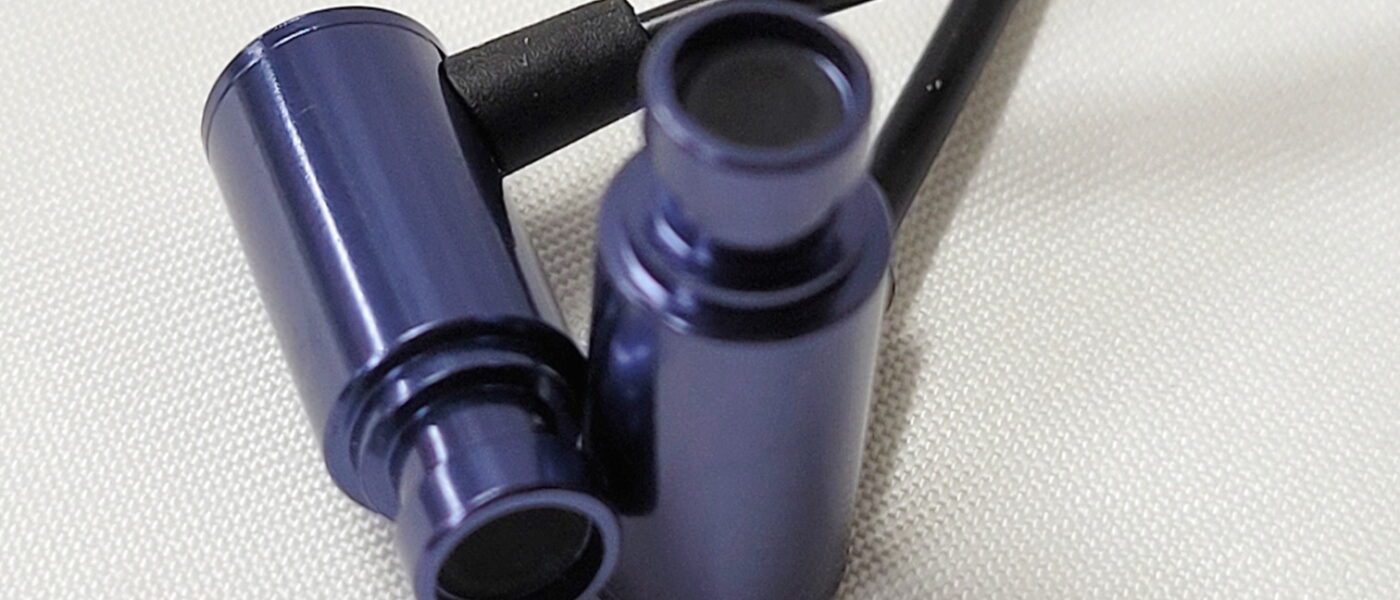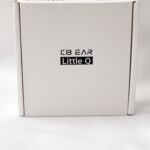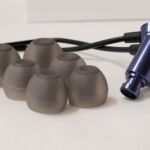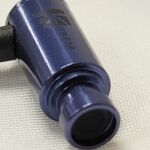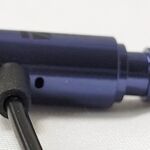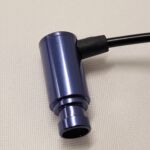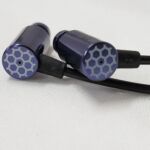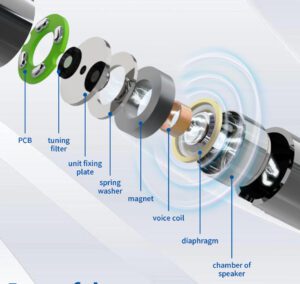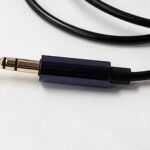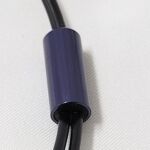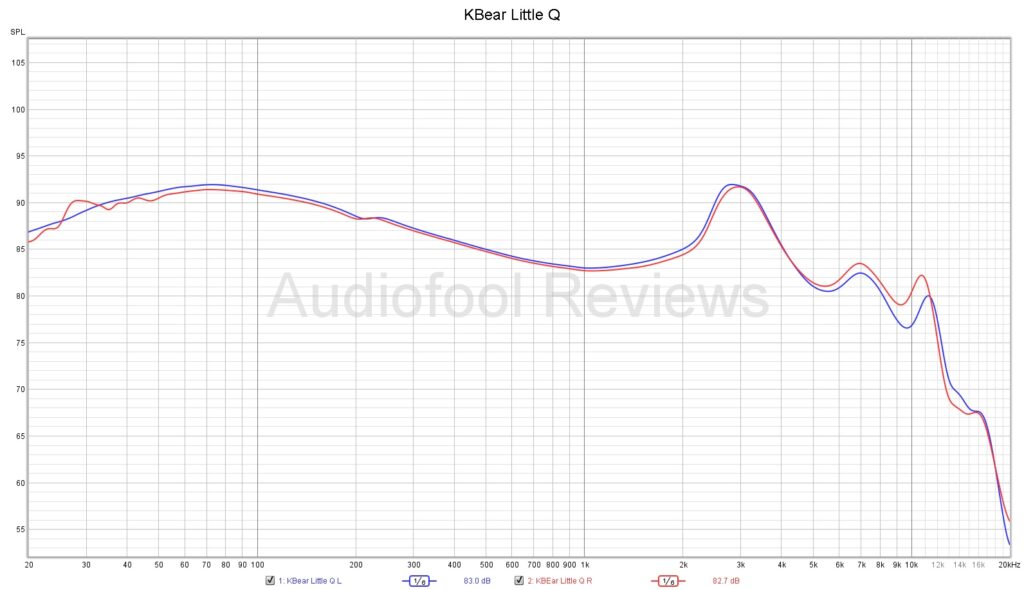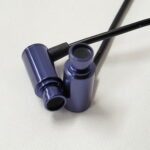KBears Little Q
disclaimer: I was provided the KBears Little Q for the purpose of review by a KBEar’s representative. I have no affiliation or financial interest in KBears or any of its distributors, nor have I received any guidance for this review. If you have an interest in KBears, please see their Facebook or Website.
Unboxing / Packaging:
Don’t expect a lot from the unboxing experience and you won’t be disappointed. The plain white lift top box has the name of the product in black on the front, and the specs in Chinese and English on the rear but no drawings of the earpieces or FR graphs to draw the eye. Opening the box is a similar experience as the earpieces resting in a fold in the cardboard with the cable and three sets of tips stored beneath the flap. The kit is a bit sparse, but this shouldn’t come as a surprise with the sub-$20 USD price.
Build/Fit:
The first thing one notices when picking up the Little Q is the lack of size and heft. Little is certainly an appropriate name as the earpieces are a straight into the ear barrel design that is reminiscent of Etymotic’s classic models and some of the early KZ micro-driver models. The earpieces, splitter, and jack are anodized aluminum in either blue, gunmetal grey, or black with the cable being matte black for all models. The earpieces themselves are just barely larger than the 6mm driver and about 2cm in length from the tip of the nozzle to the rear face-plate. There are two vents one on the rear face and another on the under side just ahead of the cable junction. Nozzles have a pronounced lip for tip retention which is particularly important with nothing to prevent extremely deep seating of this style of earpiece. I found that medium size tips and fairly deep insertion gave the best combination of comfort and isolation for me and others may find that smaller tips than usual work with this style of earpiece.
Internals:
The little Q has very little space to work with so a micro-driver is used to make the most of the space. While many will look at the shell shape and the size and assume there is a single balanced armature inside, the driver is a 6mm dynamic driver with a composite diaphragm which allows the little Q to have better lows while retaining full-range performance. Nominal impedance is 32Ω with a sensitivity of 118dB/mW which puts these in the easy to drive category but also opens them up to some hiss with higher potency sources.
Cable:
The Little Q offers cables with and without microphone which I found quite odd for an in-ear advertised for sleep use, but with the cable being non-detachable it is something that has to be decided in advance as a change of heart later means buying another in-ear rather than replacing the cable. I chose the non-mic version and am happy with that choice as I find I rarely use the mic and sometimes it can alter the sound. The jack is a 3.5mm straight connector with a deep blue housing that matches the earpieces and a single strand of black rubber casing exits the short strain relief. The splitter is a matching deep blue barrel with no chin slider and above it the strands are identical if slightly narrower diameter than below. There are short strain reliefs at the earpieces as well and the cable enters the earpieces at the rear edge of the face-plate and drum. The cable had no tendency to kink but did have some memory after being coiled for storage.
Sound:
Bass:
in a word – Big. This is star of the show for sure which again seems a bit odd to me on an in-ear recommended for sleep use. There is a large sub-bass elevation centered around 70Hz or so with roll-off not being an issue into the mid-20Hz range where you feel the vibration more than being able to really audibly hear it. Mid-bass gradually steps back but is still elevated above the mids for its entire range and can dominate the overall signature at times. There is some texture to the mid-bass but it is not as tightly defined and transparent as one would hope for and there is marked bleed into the lower mids at times as a result. Those wanting a lot of low end will appreciate the Little Q in this regard while those looking for a bit more clarity and texture in the lows may find it a bit lacking in detail.
Mids:
Lower mids can be a bit obstructed by the mid-bass at times and the floor of the V extends from the lower-mids through the true mid-range which results in mids sounding a bit distant and recessed. Lower vocals have good weight but struggle to cut through the instrumentation at times. Guitar has moderately sharp rasp with electric guitar timbre slightly better than its acoustics counterpart. Strings are little dull and need a bit of EQ to sound fully natural. A rather sharp short-lived push between 2kHz and 4kHz helps bring female vocals to the front but can also result in those same voices sounding a bit harsh against the stark backdrop of the lower recess.
Treble:
After the initial bump in the lower treble range, the treble drops back quickly and can be described as beyond polite. Above 4kHz the treble is all roughly at the same height as the lower mids which limits air and sparkle considerably. Percussion snap that relies heavily on the lower treble is still respectable but cymbals lack enough energy to sound natural and shrill instruments that should be harsh simply are not. The upside is here it does parallel a tuning that might be comforting during rest as it does little to offend.
Soundstage / Imaging:
Stage is a bit wider than deep and has limited height with an overall fairly intimate feel. Seating the orchestra is fairly good with most positions well defined and cleanly separated although instrument separation does become a bit less well defined in the lows where these is some mixing of parts. Imaging is about average as well with movements heard but absolute positions being a bit harder to identify and most of the stage is clearly in front of the listener so movements from side to side have limited range. There is some compression that occurs on complex tracks as well and seems to be intensified by high listening volumes.
Thoughts / Conclusion:
I think the temptation here would be to forgive a lot of the shortcomings of the Little Q purely because of its $15 price tag and maybe that is a fair assessment, after all nobody expected this to be a flagship in-ear. But I can’t help but feel that even at its extremely budget price, it struggles at times. The sound can be fairly good for several tracks and then you hit a track that shows off all the worst qualities of the Little Q with boom at the low, recess in the mids, nasal vocals and lack of sparkle and you are quickly reminded of why these don’t retail for substantially more. I know others have listened to and liked the little Q and perhaps this is a case of my preferences and its strengths simply not lining up as others may appreciate it much more than I do.
-
Bass - 6.5/106.5/10
-
Mids - 5/105/10
-
Treble - 6/106/10
-
Soundstage - 5/105/10
-
Imaging - 5/105/10
Summary
Pros: inexpensive, sturdy, small size allows near universal fit
Cons: big bass can overwhelm, recessed mids, treble rolls off early

